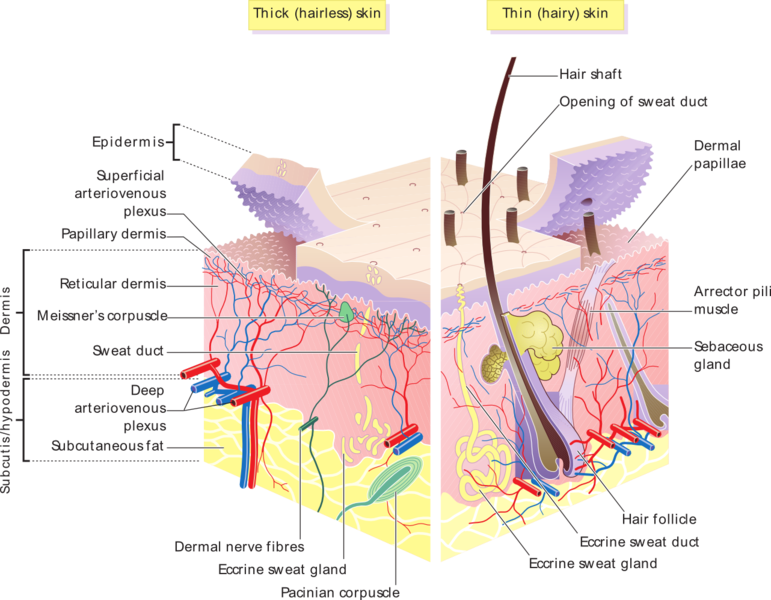Hair Follicles, Sweat Glands and Sebaceous Glands in the Skin
The epidermis of the skin has a number of appendages which maintains the integrity of the skin and help it carry out its various functions. The hair follicles, sweat and sebaceous glands are epidermal structures which are pushed into the dermis where it is rooted. Without these appendages, a number of functions of the skin would not be possible.
The Hair Follicles
The number of hair follicles vary on the different regions of the skin with the highest density on the scalp (head) and follicles absent on the palms and soles. Humans are born with a fine hair covering the body known as lanugo hair. With time, this is replaced by vellus hair and terminal hair. Certain areas like the genitals may contain vellus hair that only becomes terminal with the hormonal changes seen during puberty. Hair has an aesthetic effect and also helps with regulating the body temperature. It also provides some degree of protection more so in the high density areas and plays a role in sensation.
Hair follicles are made up of different parts :
- a papilla at the base which anchors the follicle to the surrounding connective tissue.
- a matrix which surrounds the papilla and has highly active cells that determine the width and color of the hair.
- an inner and outer root sheath which holds the hair shaft in place within the skin.
- a hair shaft which is the part of the hair follicle that extends onto the surface and is visible.
Picture from Wikimedia Commons
Sebaceous Glands
The sebaceous glands are also epidermal structures which produce an oily residue known as sebum. These glands secrete sebum around hair follicle which keeps it moist and soft. Sebum production is influenced by the sex hormones, with androgens (male hormones) increasing its production and estrogen (female hormones) diminishing it.
Sweat Glands : Eccrine and Apocrine
Although these two type of sweat glands produce sweat that differs in chemical composition and has different functions, both the secretions contribute to the natural smell of the skin referred to as body odor.
Eccrine Sweat Glands
The eccrine sweat glands are located throughout the body and produce a thin fluid of water and electrolytes (eccrine sweat). These coiled sweat glands empty its contents directly onto the skin surface. Eccrine sweat glands play an important role in thermoregulation – when hot, the sweat is released onto the skin surface where it evaporates thereby cooling the area. It is also present on the palms and soles and more often triggered by stress rather than heat. Read more on sweaty palms.
Apocrine Sweat Glands
The apocrine sweat glands produce a more viscid sweat than the eccrine glands because it contains fatty compounds. The apocrine sweat is released around the hair follicle and is believed to moisturize the hair follicle like sebum as well as impart a specific scent. The exact function of the apocrine sweat gland and its secretion has not been clearly identified. It is present on the hairy areas of the body, particularly the armpits, genital regions, around the anus, areola (nipples) and on the scalp.






